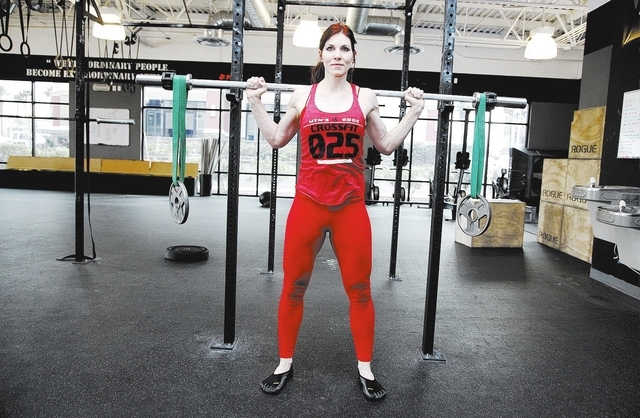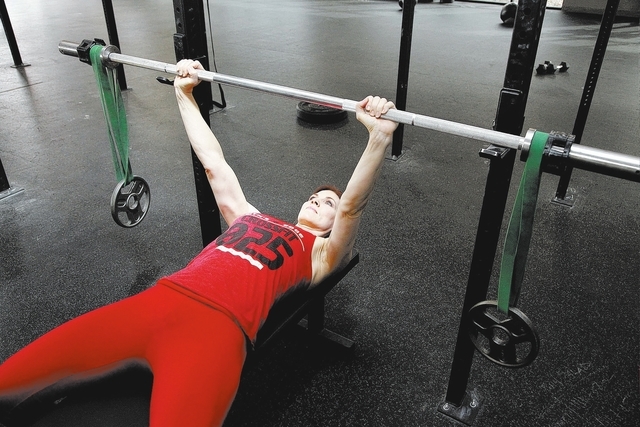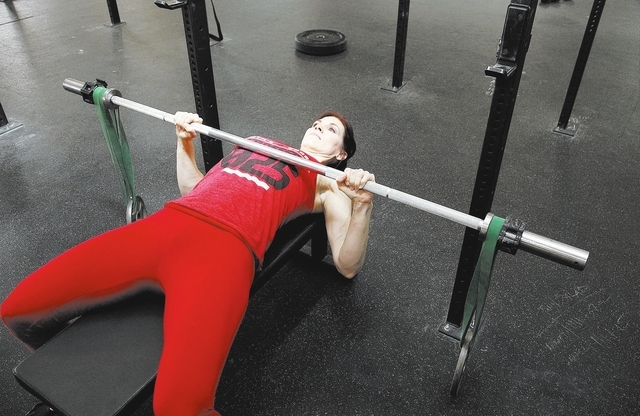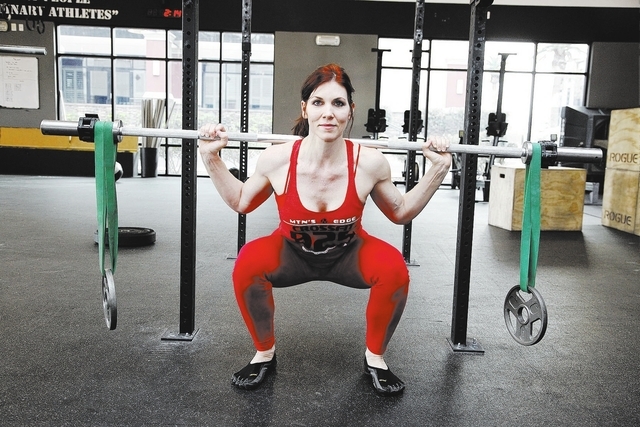Jump stretch bands enhance stability in press, squat
Jump stretch bands are starting to appear in gyms.
In past columns I have used them to assist with pullups. They are stretchy enough to provide pullup assistance without compromising good technique.
Their inherent elasticity provides other uses for functional training. Stability goes hand in hand with strength. You need stable hips to lift heavy weight in a squat or a dead lift. The same goes for shoulder stability. If you want a strong press, you will benefit from a joint that can stand up to the load.
Stability isn’t just for the heavy lifter. New and novice gym-goers can use jump stretch bands for their benefits. Whether you just want to add another layer of protection around your joints or see improvement in your leisure sports, bands can aid in your goals.
I have started to see bands at most sports retailers in Las Vegas. They are also available online; just type “jump stretch bands” in your search engine. They come in different colors and resistances. Most gyms will have them lying around or at a desk where you can check them out.
Today’s exercises are modifications of the basic squat and press. In short, you hang light weights on the bands from each end of a barbell. This simple modification can provide some challenging stability work that will prove beneficial after only a few weeks.
Using bands in this fashion can strengthen the stability of your joints. As you perform a controlled movement through the full range of motion, the weight hanging from the bands gently oscillates and sways. As your body adjusts to maintain control, you develop joint stability and muscle strength.
Leave your macho lifter ego at home when you work with the bands to gain stability. Heavy weights are not the goal here. Controlled movements are. I recommend using anywhere from 5 percent to 30 percent of your maximum lift on any movement. If you squat 100 pounds, then start with a bar and weight that equal 5 to 10 pounds. Yes, start that light. You may be surprised how shaky you are.
Volume is a tool best used with stability. Perform two to four sets of eight to 20 repetitions. Make every rep perfect. Your first set will seem a little easy. By the time you get to sets three and four, you will see that the little weights provide plenty of stimuli. If you are able to complete four sets at one weight, add some weight the next week. Make small jumps in weight opposed to large ones. Five pounds can be the difference between a difficult movement and one that is impossible because of a shaking barbell.
Always use a spotter when using bands in this fashion. If you shake too much, your partner can help you stabilize between reps or grab the bar should you not be able to complete your set. Use a squat rack with its safety bars when doing the squats. Ask a trainer at your gym to help you. If you don’t have a spotter that day, then skip band work until you have one.
Tempo is important when working stability exercises. Unlike maximum effort lifts where speed and power are king, stability movements are slow. Count for two seconds on the way up and down. You could even use a four- or 10-second count for your repetitions. If you lift too fast, the bands will swing too violently and throw the bar around with you under it, another good reason to use a trainer or spotter. Go slow and enjoy the struggle.
Use this stability work as an accessory to your main lifts. There is no need to hang bands from every bar you lift. I recommend using the squat and any press. It could be a shoulder press as featured or a bench press or even an incline press.
Grip when holding the bar is important. Some people use an open grip. This means the thumb is not wrapped around the bar when lifting. It is nicknamed the suicide grip. Many of the best bench pressers use this grip when lifting. I do not recommend it for stability work. If the bar shakes too much, you might actually lose hold of it. Wrap the thumb around the bar and hold on tight.
Chris Huth is a Las Vegas trainer. He can be reached at 702trainer@gmail.com. Consult your physician before beginning any exercise program.































